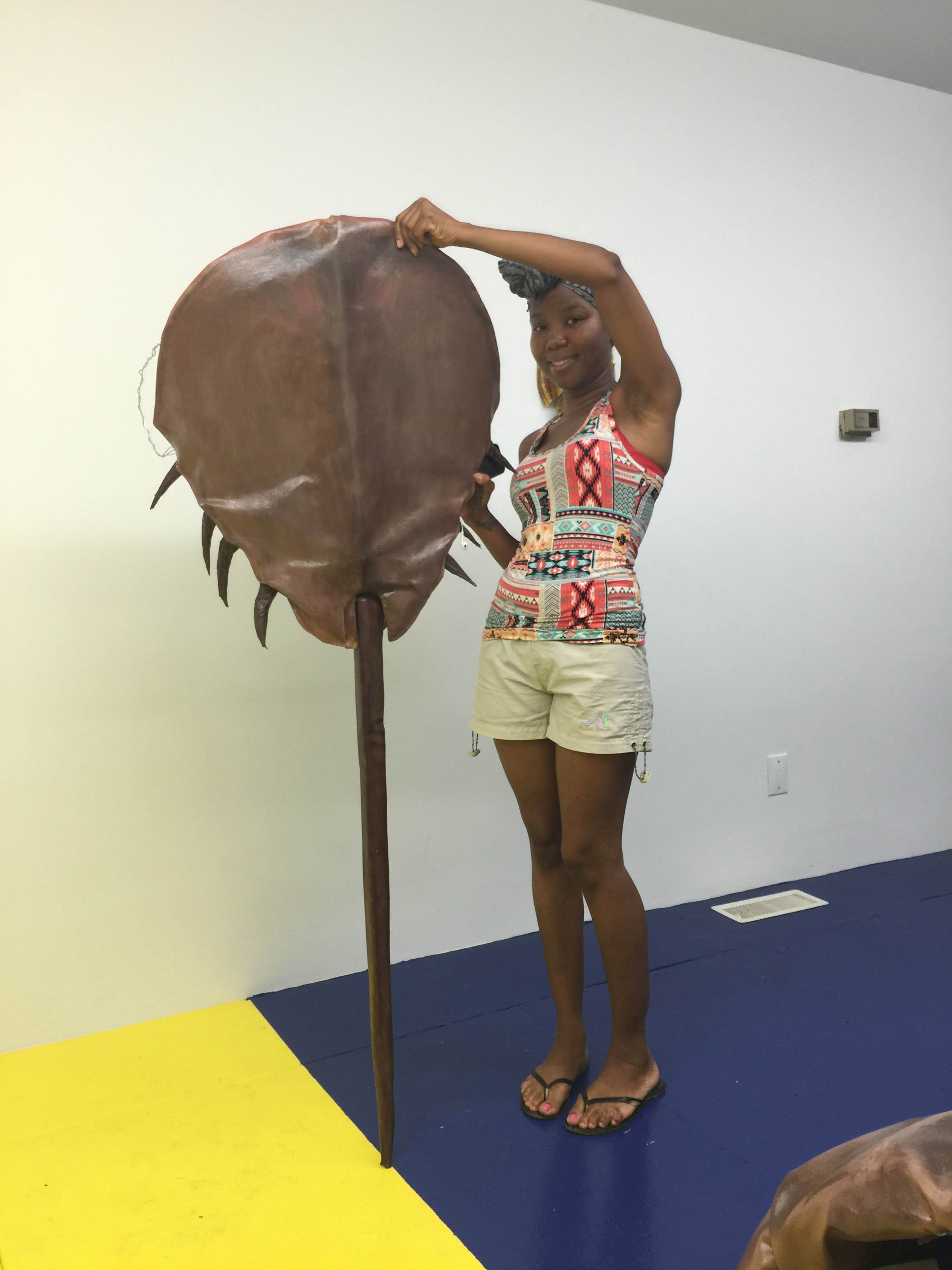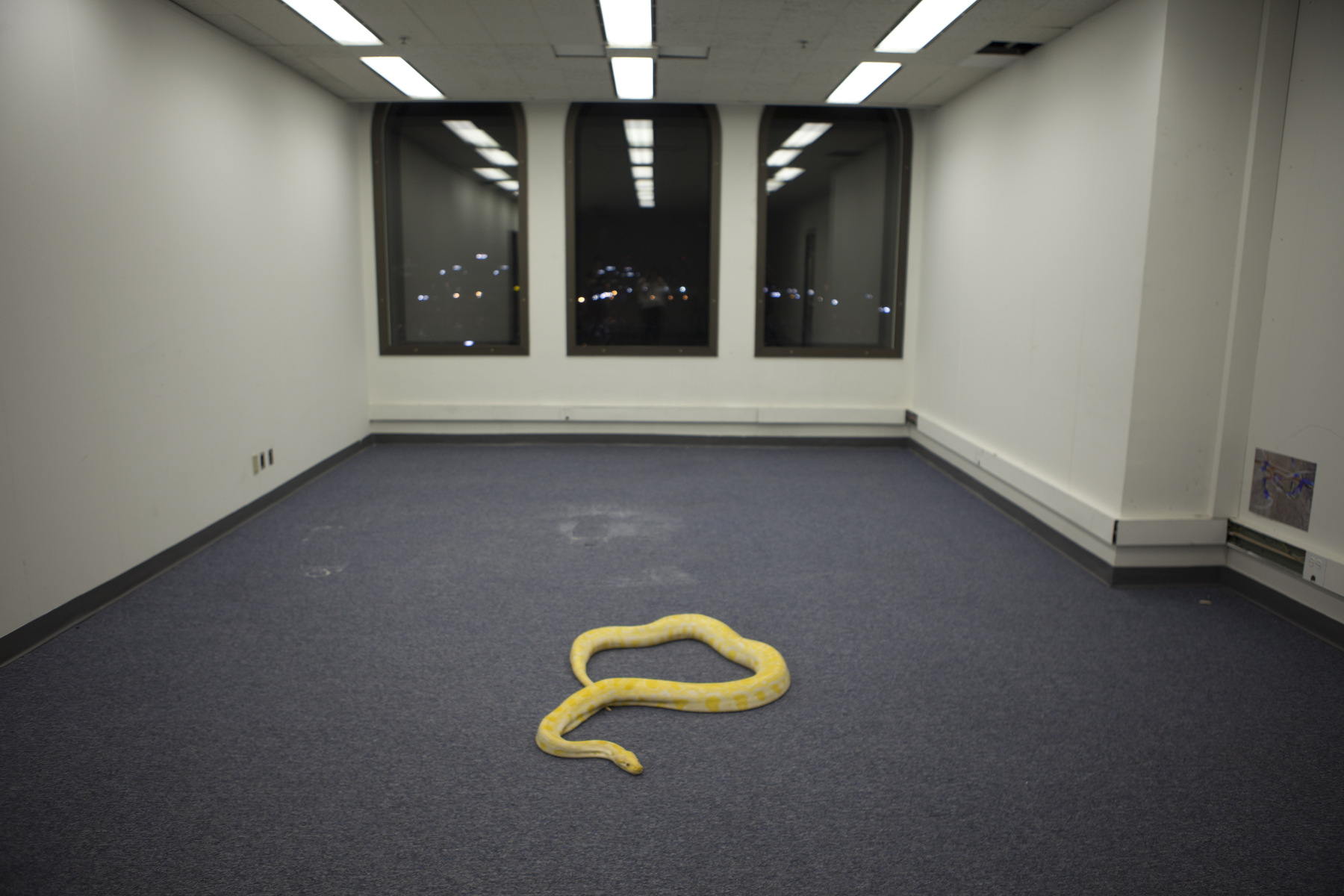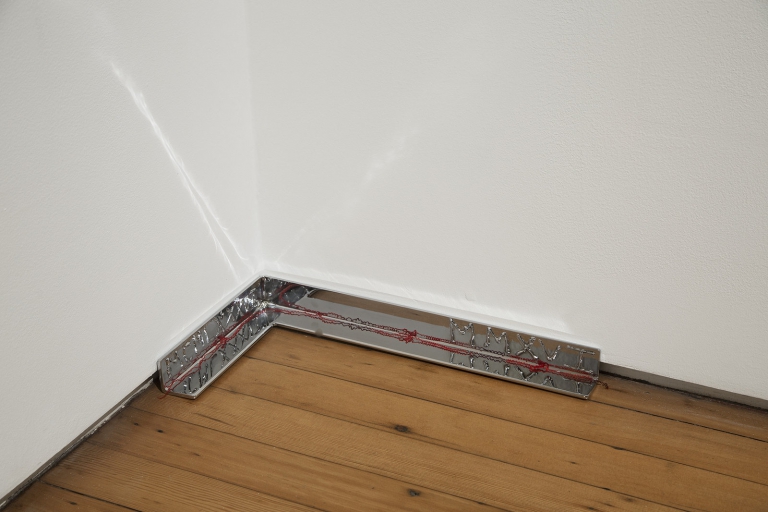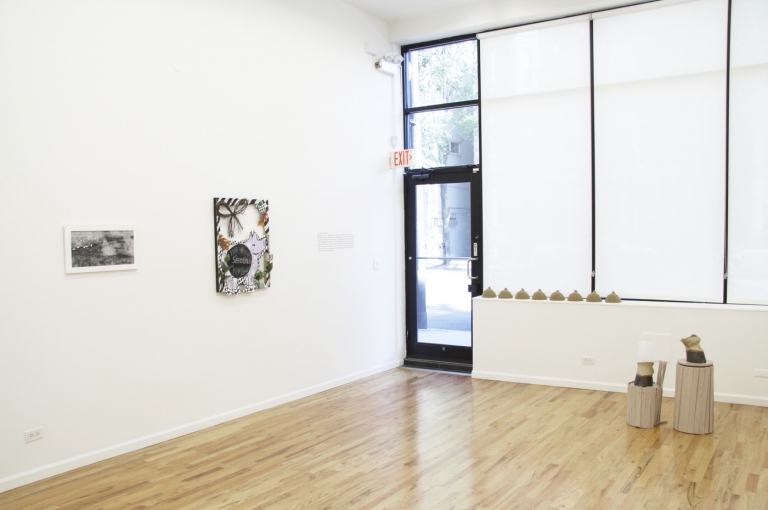Artist: Puppies Puppies
Exhibition title: HORSESHOECRABS HORSESHOECRABS
Venue: Freddy, Baltimore, US
Date: September 5 – September 26, 2015
Photography: images copyright and courtesy of the artist and Freddy, Baltimore
Freddy is pleased to present HorseshoeCrabs HorseshoeCrabs by Puppies Puppies. The exhibition features painted horseshoe crabs and vinyl works in addition to a live performance at the gallery commencing at 8:30pm sharp on Saturday, September 5th.
The thing about the blood that everyone notices first: It’s blue, baby blue. The marvelous thing about horseshoe crab blood, though, isn’t the color. It’s a chemical found only in the amoebocytes of its blood cells that can detect mere traces of bacterial presence and trap them in inescapable clots.
To take advantage of this biological idiosyncrasy, pharmaceutical companies burst the cells that contain the chemical, called coagulogen. Then, they can use the coagulogen to detect contamination in any solution that might come into contact with blood. If there are dangerous bacterial endotoxins in the liquid—even at a concentration of one part per trillion—the horseshoe crab blood extract will go to work, turning the solution into what scientist Fred Bang, who co-discovered the substance, called a “gel.”
“This gel immobilized the bacteria but did not kill them,” Bang wrote in the 1956 paper announcing the substance. “The gel or clot was stable and tough and remained so for several weeks at room temperature.”
If there is no bacterial contamination, then the coagulation does not occur, and the solution can be considered free of bacteria. It’s a simple, nearly instantaneous test that goes by the name of the LAL, or Limulus amebocyte lysate, test (after the species name of the crab, Limulus polyphemus).
The LAL test replaced the rather horrifying prospect of possibly contaminated substances being tested on “large colonies of rabbits.” Pharma companies didn’t like the rabbit process, either, because it was slow and expensive.
So, now, the horseshoe blood test is a big business. “Every drug certified by the FDA must be tested using LAL,” PBS’s Nature documentary noted, “as do surgical implants such as pacemakers and prosthetic devices.
I don’t know about you, but the idea that every single person in America who has ever had an injection has been protected because we harvest the blood of a forgettable sea creature with a hidden chemical superpower makes me feel a little bit crazy. This scenario is not even sci-fi, it’s postmodern technology.
“The Blood Harvest,” The Atlantic (February, 2014)
Hi this is Puppies speaking on behalf of HorseshoeCrabs:
The horseshoe crab… It has evolved onnnnly so much as to further its existence & existence it has achieveddd…. 445 million years worth….. horseshoe crabs and paintings seem to relate in my mind. They are expressions that have survived the test of time. By linking the two I’m expressing my need as an artist (not by me being the actual artist that painted the paintings) but my need to present the paintings in this context. Maybe these expressions are addressing my need to survive and to hide under many layers in order to do so. To understand my fleeting existence but know that humans like me will continue to paint. To breed on the shoreline in shallow water only to propel the existence of my expressions and the expressions to come later on. I feel very deeply for these creatures.
Puppies Puppies, Horseshoe crab blood drive (singular), 2015
Puppies Puppies, Yellow monochrome (painted by Joshua Abelow), 2015
Puppies Puppies, Horseshoe crab blood drive (mass), 2015
Puppies Puppies, Primordium (painted by G. Simons), 2015
Puppies Puppies, Face (painted by Seth and Rauchelle Burke), 2015
Puppies Puppies, Face (painted by Johnny Rizzo), 2015
Puppies Puppies and Erin Hauer, Human Horseshoe Crab (performance), 2015
Custom costume by Erin Hauer (activated by performer)


























